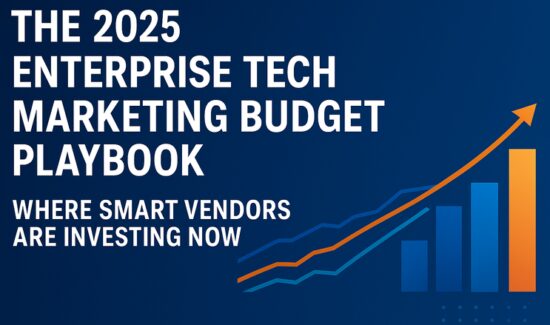How Enablement Technology Sets Finserv Professionals Up to Thrive


As part of Solutions Review’s Contributed Content Series—a collection of contributed columns written by industry experts in maturing software categories—Kerry Ryan, the Director of Financial Services Marketing at Seismic, explains how enablement technology can help financial services (“finserv”) professionals succeed.
In today’s challenging times, creating a stellar client experience isn’t just a competitive differentiator—it’s an absolute necessity. It should go without saying that the financial services (finserv) industry has always operated with a service-based mindset and focus on high-touch experiences. But as our current economic turbulence persists, client-facing teams, in particular, need tools to help them operate efficiently, elevate client experiences, and optimize operations.
Seismic recently surveyed over 1,200 leaders across the United States and Europe to determine how enablement technology impacts business success in a down economy. For context: this tech includes multiple capabilities and solutions, including customer content management and automation, training and coaching, client engagement, strategy and planning, and analytics and intelligence.
The study found that with the right tools, firms can optimize operations and deliver internal and external outcomes, including a superior client experience.
Unlocking Efficiencies
One of enablement tech’s core value propositions is helping teams create more efficient processes by automating tedious administrative tasks. On average, respondents based in the US who use enablement tech reported that it saves them 15 hours per week, freeing up time to focus on revenue-generating activities.
An overwhelming majority (99 percent) of those who use enablement tech agreed it makes their job easier. Of those, 84 percent said it makes them more productive. With the right tools, employees can save time finding metrics for planning and forecasting (52 percent), organizing requests and/or addressing training gaps (48 percent), and locating important information (47 percent).
When employees can focus on the human element of their job—i.e., building relationships with clients and creative problem-solving—it leads to valuable outcomes for firms and their clients alike: 86 percent of respondents said enablement tech helps them drive stronger results.
For some, enablement tech has become a must-have, and removing it from the tech stack could have detrimental effects: 78 percent of respondents expressed concern that decreasing their company’s investment in enablement would lead to operational inefficiencies, and 73 percent said the same would lead to lower revenue.
Easy Access to Content
Respondents cited simplifying and streamlining access to important content as one of the top benefits of enablement technology. When client-facing professionals have access to the information they need without having to track things down, it can be incredibly empowering: 97 percent said quick access to information and/or content helps them speak to clients from a more informed standpoint. Further, 81 percent said it helps them prepare for client meetings and presentations, and 85 percent said it has helped them avoid a mistake by helping them quickly locate an answer they needed.
In the finserv industry, mistakes can come with a hefty price tag. Because they’re dealing with sensitive client information like financial documents, employees must feel confident they’re operating with the correct information at the right time. Finserv professionals have a wealth of data and insights about their clients at their fingertips. Clients expect them to use this information to personalize experiences and deliver information in a highly specialized manner. What’s more, employees also need to provide compliant and on-brand content.
Enablement technology is a significant confidence booster: 76 percent of respondents shared this tech prevents them from second-guessing themselves. Conversely, employees who lack an enablement solution spend an average of 13 hours per week tracking down, comparing, or revising content. What’s worse, 83 percent of respondents shared they are often or sometimes unable to locate the content they need when interacting with a prospect or client.
When every second of the workday counts, client-facing professionals shouldn’t be wasting their time tracking down content or comparing and revising different versions of valuable assets, this is evidenced in the survey results: 77 percent said this time could be otherwise spent advancing the goals of their business.
Better Client Experiences
The endgame of enablement, regardless of industry, is to provide improved client service and experiences across the board. This is especially imperative in the finserv sector during an economic downturn, as financial anxiety persists for individuals and firms alike. With enablement tech, 78 percent of respondents confirmed that it helps them provide a better client experience, and 36 percent said the same for increasing client satisfaction and engagement.
The Future of Enablement
Enablement technology will continue to evolve as a critical part of firms’ digital transformation strategies. These tools align sales and service teams with marketing, learning, development, and product teams to achieve broader company goals.
Firms that successfully adopt the use of enablement tech to address their top pain points and support their most important goals—whether that’s sourcing relevant content, streamlining tedious manual tasks, or improving coaching and training processes—will be optimally positioned to differentiate and successfully compete in our highly challenging marketplace. As such, we’ll continue to see firms improve the maturity of their enablement journey, reduce their overall technical debt, and ultimately unlock valuable outcomes for their clients and businesses.





















